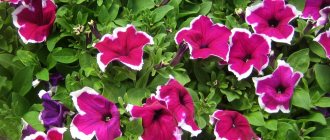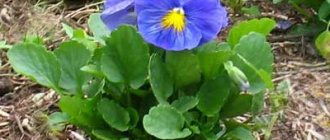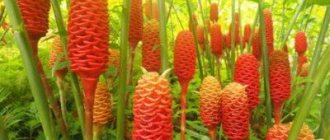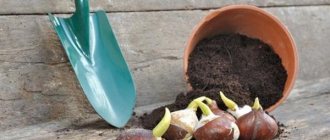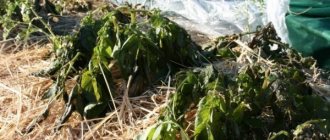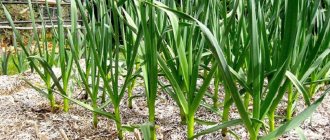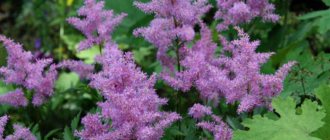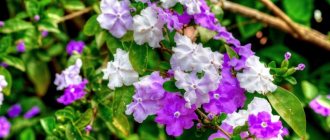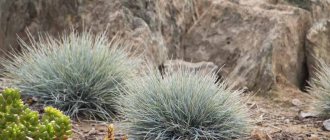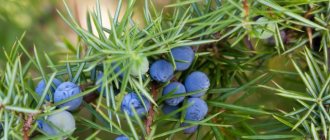The perennial plant Incarvillea is part of the Bignoniaceae family. This is a tap-root, cold-resistant perennial with funnel-shaped flowers, bright and picturesque. It is rarely used in floral and decorative decoration of gardens and parks.
Growing incarvillea is difficult because in temperate climates its seeds do not ripen well. Dividing the bush is complicated due to the fragile, thick roots located at a considerable depth.
- Selecting and preparing a seat
Varieties of garden gloxinia
The natural range of the genus Incarvillea is the countries of Central Asia, Southern China, the Himalayas, and the Tien Shan.
Incarvillea rosea
The height of the bush is up to 40 cm. The flowers are deep pink in color and form a racemose inflorescence up to 30 cm long.
Incarvillea rosea
Incarvillea Myra
I. mairei, I. Grandiflora - red-violet flowers with a yellow throat covered with white strokes. It has only a basal rosette of long-petioled leaves.
Incarvillea Myra
Incarvillea delawaya
I. delavayi is a tall perennial shrub up to 1.2 m tall. Loose raceme inflorescences are formed from 3–4 lilac-red flowers with a yellow throat. Flowering begins in the second half of June and lasts 30–35 days. There are varieties with white, violet-purple flowers.
Incarvillea delawaya
Gallery: garden gloxinia (25 photos)
Incarvillea dense
I. compacta is a low-growing perennial about 30 cm in height, with smooth, slightly pubescent stems, with flowers up to 6 cm in diameter. Medium-sized variety - up to 80 cm high. A small number of pinnate leaves of rich green color are collected in a rosette.
The flowers bloom one after another. The fruit, a capsule with gray seeds, ripens in August. The flowers are mostly purple-violet, but there are varieties with corollas of salmon, light pink and white. Blooms from May to June for 20–30 days.
Also read: Amazing liatris for decorating your garden plot
Incarvillea dense
Incarvillea Olga
I. olgae Regel is a tall bush that grows up to 2 m. The inflorescence-panicle up to 40 cm long consists of crimson-colored flowers up to 2 cm in diameter. The leaves are pinnately dissected. Flowering in early July lasting 6–7 weeks. Frost-resistant. It tolerates dividing the bush well.
Incarvillea Olga
Incarvillea chinensis
I. sinensis has long been cultivated in Asia. A low-growing bush up to 30 cm high with creamy yellow flowers. Flowering begins 2.5 months after sowing the seeds. Long flowering is due to the continuous formation of new shoots.
Incarvillea chinensis
Incarvillea White Swan
A bush up to 50 cm high with finely pinnate leaves collected in a basal rosette. Small-flowered racemes consist of cream-colored flowers with a diameter of 5 cm.
Planting incarvillea in open ground
Incarvellia is bred by seeds and vegetatively - by dividing the bush and rhizome, stem and leaf cuttings.
Selecting and preparing a seat
Incarvellia can be classified as semi-shade-tolerant plants - mainly in the sun and in light shade. Flowering is delayed on the northern side of the site. The location is open, sheltered from drafts. Flowering time can be delayed by prolonged spring frosts.
Prefers loose, nutritious soil with a neutral acid-base reaction (pH 5.5–6.3). Does not tolerate waterlogging - if necessary, arrange drainage.
Incarvelia can be classified as semi-shade-tolerant plants - mainly in the sun and in light shade
Timing, scheme and technology of planting
Garden gloxinia seeds can be planted in open ground from April to June. In this case, you can grow incarvellia with increased winter hardiness. Flowering occurs in the second or third year. Seeds are sown in moist, leveled and tilled until finely lumpy soil.
Incarvillea successfully reproduces in summer with developed leaves:
- pinnate leaves from the basal rosette are carefully removed from the mother plant, trying to preserve the base of the petiole;
- immediately placed in the cutting bed;
- at the bottom of the petiole, after 15–20 days, callus forms and threads of white roots form;
- a year later, spindle-shaped roots, a basal rosette of 3–4 leaves and 1–2 flowers are formed.
Garden gloxinia seeds can be planted in open ground from April to June.
Planting rhizomes in early spring:
- dig up the ground a week before planting, adding coarse sand to the heavy soil;
- manure cannot be added;
- before planting, add bone meal to the soil - 1 handful per 1 m²;
- dig a hole equal to the height of the rhizome;
- The bottom of the hole is made flat and the walls as vertical as possible;
- covered with earth, lightly compacted and marked with a peg.
Also read: The best hanging plants for planting in pots
The plant can be grown in containers that provide good drainage.
When planting in a permanent place, low-growing plants are planted per 1 m² from 15 to 30 pieces, medium-sized plants - from 6 to 10, tall plants - up to 4 pieces. If roots cut into pieces are planted, they are sprinkled with 4–5 cm of soil. By dividing the bush, the flower is propagated in early spring or at the end of August, beginning of September. To root stem and leaf cuttings, use a mixture of peat and sand in equal quantities.
Wintering
Without any problems, under a light shelter of straw or fallen leaves of fruit trees, Incarvillea delawaya overwinters in frost resistance zone 6. In the fifth, something more solid needs to be built. For example, cover a thick layer of mulch with agrofibre or spruce branches. Or dig up incarvillea for the winter. Even if a crop survives one winter satisfactorily, there is no guarantee that it will not die the next.
In zone 4 there are no options - you need to dig up the root cones of the incarvillea before the first frost, dry it in a greenhouse or a cool, ventilated room. You can store them in the cellar, basement, vegetable compartment of the refrigerator, placing them in a box or box with sand.
Incarvillea root cones
Growing incarvillea from seeds and care immediately after planting
More planting material is obtained from seeds than through vegetative propagation. Incarvillea seeds, which bloom in spring, have a deep dormant phase in their development cycle. To awaken seeds to life, stratification is used - freezing and alternating exposure to heat and cold.
Stratification of incarvillea seeds at home is carried out as follows:
- the bag of seeds is placed in the freezer for 2–4 weeks;
- after freezing, they are sown in trays with moist soil, covered with film and kept in a cool place at 2¬6º C;
- after 1–2 weeks, transfer the trays to heat - t 20¬23º C.
The seedlings are provided with ventilation, a decrease in temperature to 16º C and daylight for at least 12 hours. The film is opened slightly.
More planting material is obtained from seeds than through vegetative propagation
Before sowing, prepared flower soil from the store is spilled with a weak hot solution of potassium permanganate or heated in a water bath. The soil prepared from garden soil must be frozen several times during the winter, followed by thawing, steamed for 1 hour in a water bath and spilled with a hot dark pink solution of potassium permanganate.
The substrate for growing seedlings must contain:
- 20% sifted peat;
- 20% fine sand;
- 10% garden land.
Per 10 liters of substrate add 15 g of wood ash to soften acidity and 5 g of superphosphate. Disinfect the dishes - soak for 15 minutes in a 2% bleach solution and wash with laundry soap. The preparations “Zircon” and “Epin” stimulate seed germination.
Also read: How to grow fragrant thyme at home and in the garden
Pick:
- moisten the soil well so that when diving, as much native soil as possible sticks to the roots;
- If the roots have grown too long, pinch half of them for better branching;
- dive at the stage of 1–3 true leaves;
- planted at a distance of 3 cm, to the same depth, sprayed with warm water, covered with paper and left in a dark place for 2-3 days.
Incarvellia dives at the stage of 1–3 true leaves
Seedlings should be grown in a well-ventilated, warm room to avoid the formation of gray rot. They are planted in the garden after the formation of several true leaves in May–June and grown for 2 years, after which they are sent to a permanent place.
Recommendations for caring for incarvillea
Incarvillea grows in one place for 3–5 years. Roots dug up in the fall or purchased in a store in winter are stored in a cool place in damp sand until planting. Two weeks before planting in the ground, they are taken out to warm up. The large rhizome is divided into parts. The remaining small pieces can be planted in pots, and when the spring frosts have subsided, planted with a clod of earth in garden soil. Stem and leaf cuttings are harvested in June–July.
During the period of increasing vegetative mass, they are fed with nitrogen fertilizers. Lush flowering will be ensured by fertilizing with phosphorus-containing fertilizers. Abundantly flowering garden gloxinias do not tolerate winter well. Water moderately - the plant does not tolerate waterlogging. If overwatered, the leaves may turn brown and fall off.
Incarvillea grows in one place for 3–5 years
Shelter is needed for the winter - peat, dry leaves, wood shavings are suitable. In the spring, as soon as the snow melts, the mulch is removed. If you are late in removing the covering, the roots may rot. The roots are also dug up in the fall and stored at 5º C in sawdust, peat or sand in a dark place.
Collection and storage of seeds is carried out according to the following algorithm:
- before extracting the seeds, the boxes are dried in the sun with good ventilation;
- dried seeds are stored in fabric bags in a cool place.
Well-dried incarvillea seeds remain viable for 2–3 years.
Protection from diseases and pests
The main pests of incarvillea are thrips, aphids, spider mites, and mealybugs. The fight against them and diseases is carried out through treatment with special insecto-fungicidal preparations. However, there are other problems that may accompany the cultivation of this ornamental crop in home gardening conditions:
- an insufficient amount of nutritional components in the soil at the incarvillea growing site often causes yellowing of the leaves;
- the result of improper care is often browning of leaves and their premature falling off;
- Overmoistening can cause the death of an ornamental plant as a result of rotting tubers.
Compliance with the Incarvillea growing technology, including proper watering, winter shelter, as well as preventive measures, contributes to abundant, long-term flowering and allows you to obtain a healthy plant suitable for reproduction.
